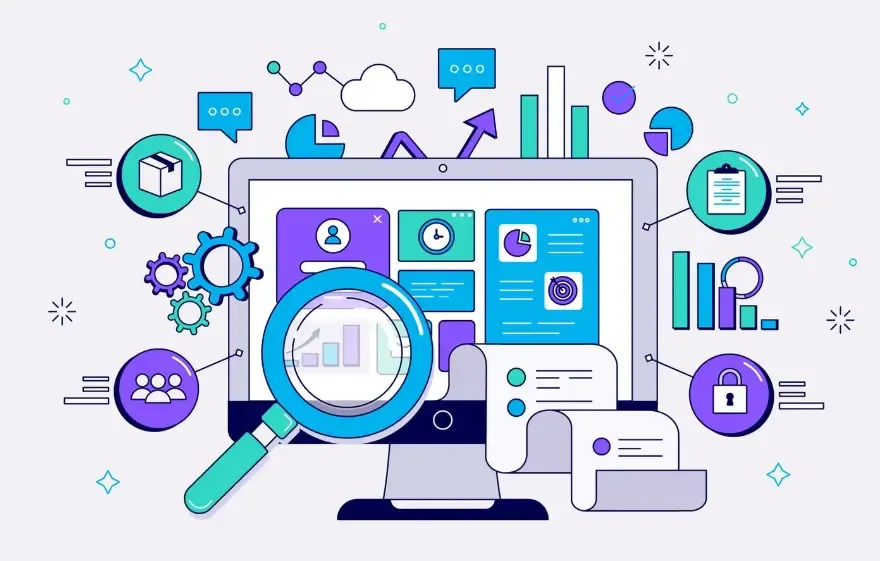Improving E-Commerce UX and Conversions with User-Agent Data
In the highly competitive e-commerce industry, improving user experience and conversion rates is a continuous goal pursued by every platform. In addition to traditional product optimization and advertisement placement, an increasing number of e-commerce businesses are starting to pay attention to user behavior data analysis.
Among these, User-Agent parsing is quite important, but most people do not know exactly how to apply it. Next, I will give a detailed introduction on how e-commerce platforms can use User-Agent parsing tools to enhance user experience and conversion rates.

1. What is User-Agent parsing?
In simple terms, the User-Agent (UA) is a string sent by the browser when accessing a website, which informs the server about the user's device, operating system, browser type, and version information.
For example, when a user opens your e-commerce app webpage using an iPhone, the server can determine through the User-Agent analysis that it is an iOS system + Safari browser + mobile access.
Through this information, e-commerce platforms can achieve personalized display, for example:
Automatically adapt mobile pages to improve loading speed;
Adjust the image clarity according to the device model.
Optimize page layout for compatibility with different browsers.
Accurate recommendations for popular products compatible with this device.
2. Why E-commerce Platforms Are NeededUser-Agent AnalysisTool?
For medium to large e-commerce websites, daily traffic can reach millions, making manual analysis nearly impossible. User-Agent parsing tools can help platforms quickly and efficiently extract, analyze, and categorize user access sources.
Core advantages include:
Identify user device type: Determine whether the visitor is using a PC, mobile phone, or tablet, and thereby decide whether to display the PC version or the mobile version of the page.
Optimize front-end loading performance: load the most suitable resource files according to different browsers or systems.
Detecting crawlers or malicious requests: Filtering false traffic to ensure the accuracy of data analysis;
Assist precise marketing: Targeted push notifications for promotions or app download reminders based on device and system preferences.
Three,ToDetect browser fingerprint detectionDeep application of tools
Although User-Agent parsing can provide basic device information, in practical applications, some malicious users may spoof the User-Agent, thus interfering with data statistics.
At this time, combining the ToDetect browser fingerprint detection tool can further improve the accuracy of identification.
ToDetect main function:
Identify real access devices: By collecting browser fingerprints (such as screen resolution, fonts, plugins, languages, etc.), determine whether the access is from a real user;
Prevent account fraud and order brushing behavior: detect multiple account operations under the same device.
Optimize advertising placement strategies: identify high-value user groups and increase ROI;
By utilizing User-Agent data, we can create multidimensional user profiles to provide a more accurate foundation for smart recommendation algorithms.
For example, a certain e-commerce platform discovered through the ToDetect tool that although the User-Agent showed as "iPhone user," the browser fingerprint characteristics were consistent with that of an emulator. After verification, it was determined to be false traffic, thus avoiding a waste of advertising budget.
IV. How to Optimize E-commerce User Experience through User-Agent Data
1. Intelligent page adaptation
Automatically detect user devices and switch to the optimal version, such as loading a lightweight page on mobile devices and high-resolution images on PC.
2. Dynamic Recommended Content
Analyze the user's system and browser characteristics to promote product categories that best match their usage habits. For example, Mac users prefer design software or high-end digital products.
3. Improve Website Performance
Optimize compatibility for common browsers such as Chrome, Safari, and Edge, and reduce bounce rates caused by JS script incompatibility.
4. Precision Marketing and Remarketing
Provide personalized promotional information based on device type and access behavior to increase repeat purchase rates.
5. User-Agent Parsing Common Questions and Answers (FAQ)
1. Is User-Agent parsing safe? Will it leak user privacy?
No. The User-Agent only contains browser and system information, and does not involve personal privacy data; it is part of the standard HTTP request header information.
2. Why is it not possible to fully identify users relying solely on User-Agent?
Because some visitors may use proxies or modify UA information, it is necessary to combine browser fingerprint detection tools like ToDetect in order to obtain more accurate identification results.
3. Is the ToDetect browser fingerprint detection tool difficult to integrate?
It's not difficult. ToDetect provides a visual interface and API documentation, supports multi-language SDK integration, and can be quickly integrated with just a few lines of code.
4. How to evaluate the conversion improvement brought by User-Agent parsing?
You can quantify the effects by comparing key metrics such as page access depth, dwell time, bounce rate, and order rate before and after optimization.
Summary
As competition among e-commerce platforms intensifies, relying solely on products and prices is becoming difficult to win. The real difference is often reflected in technical details and user experience.
Through the User-Agent parsing tool, e-commerce companies can gain a more precise understanding of the user device environment. Combined with ToDetect browser fingerprint detection technology, this enables safer and smarter user identification and marketing strategies. This not only optimizes the user experience but also significantly increases conversion rates and user retention rates.



